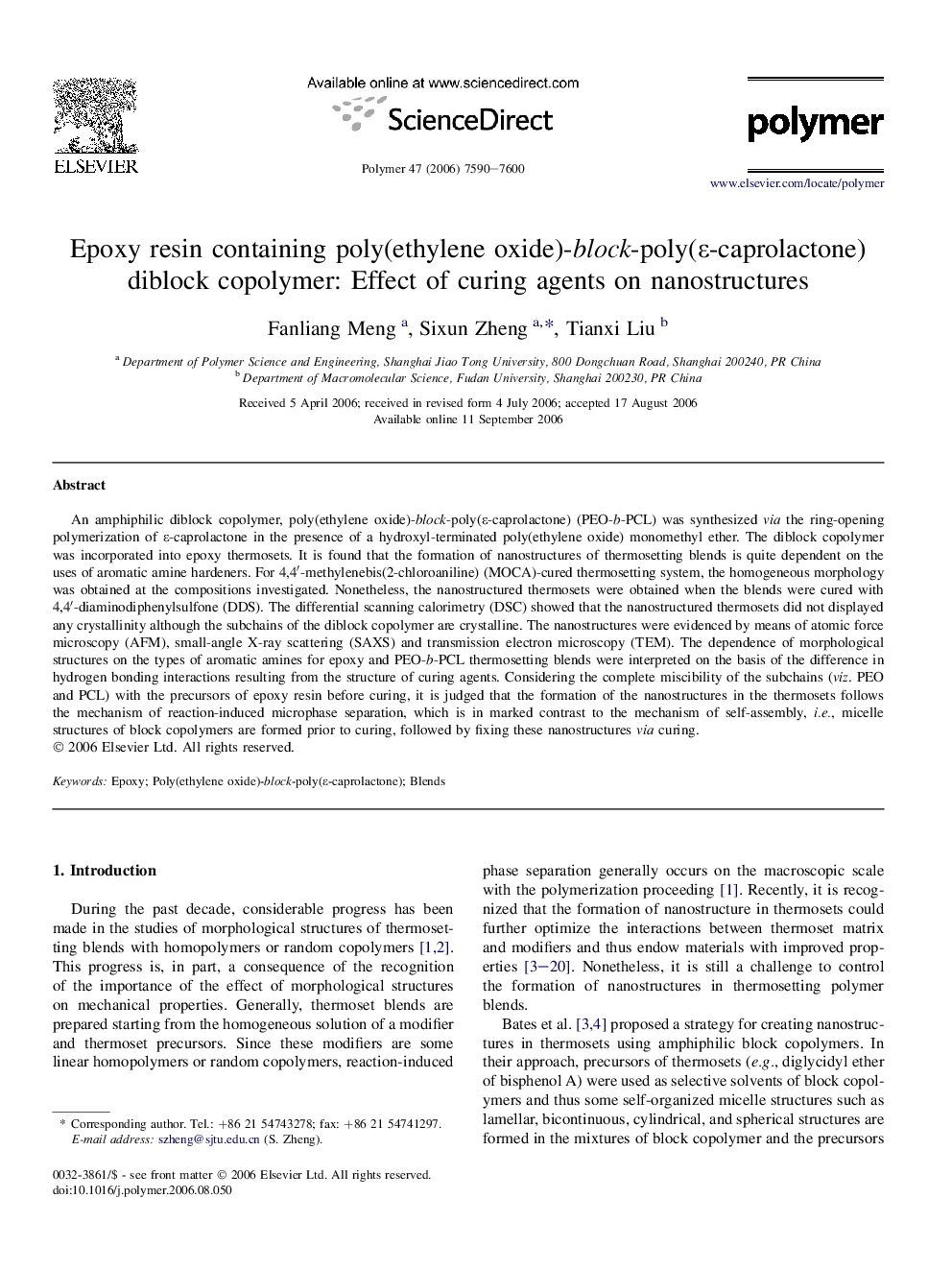| کد مقاله | کد نشریه | سال انتشار | مقاله انگلیسی | نسخه تمام متن |
|---|---|---|---|---|
| 5188815 | 1381169 | 2006 | 11 صفحه PDF | دانلود رایگان |
عنوان انگلیسی مقاله ISI
Epoxy resin containing poly(ethylene oxide)-block-poly(É-caprolactone) diblock copolymer: Effect of curing agents on nanostructures
دانلود مقاله + سفارش ترجمه
دانلود مقاله ISI انگلیسی
رایگان برای ایرانیان
موضوعات مرتبط
مهندسی و علوم پایه
شیمی
شیمی آلی
پیش نمایش صفحه اول مقاله

چکیده انگلیسی
An amphiphilic diblock copolymer, poly(ethylene oxide)-block-poly(É-caprolactone) (PEO-b-PCL) was synthesized via the ring-opening polymerization of É-caprolactone in the presence of a hydroxyl-terminated poly(ethylene oxide) monomethyl ether. The diblock copolymer was incorporated into epoxy thermosets. It is found that the formation of nanostructures of thermosetting blends is quite dependent on the uses of aromatic amine hardeners. For 4,4â²-methylenebis(2-chloroaniline) (MOCA)-cured thermosetting system, the homogeneous morphology was obtained at the compositions investigated. Nonetheless, the nanostructured thermosets were obtained when the blends were cured with 4,4â²-diaminodiphenylsulfone (DDS). The differential scanning calorimetry (DSC) showed that the nanostructured thermosets did not displayed any crystallinity although the subchains of the diblock copolymer are crystalline. The nanostructures were evidenced by means of atomic force microscopy (AFM), small-angle X-ray scattering (SAXS) and transmission electron microscopy (TEM). The dependence of morphological structures on the types of aromatic amines for epoxy and PEO-b-PCL thermosetting blends were interpreted on the basis of the difference in hydrogen bonding interactions resulting from the structure of curing agents. Considering the complete miscibility of the subchains (viz. PEO and PCL) with the precursors of epoxy resin before curing, it is judged that the formation of the nanostructures in the thermosets follows the mechanism of reaction-induced microphase separation, which is in marked contrast to the mechanism of self-assembly, i.e., micelle structures of block copolymers are formed prior to curing, followed by fixing these nanostructures via curing.
ناشر
Database: Elsevier - ScienceDirect (ساینس دایرکت)
Journal: Polymer - Volume 47, Issue 21, 4 October 2006, Pages 7590-7600
Journal: Polymer - Volume 47, Issue 21, 4 October 2006, Pages 7590-7600
نویسندگان
Fanliang Meng, Sixun Zheng, Tianxi Liu,